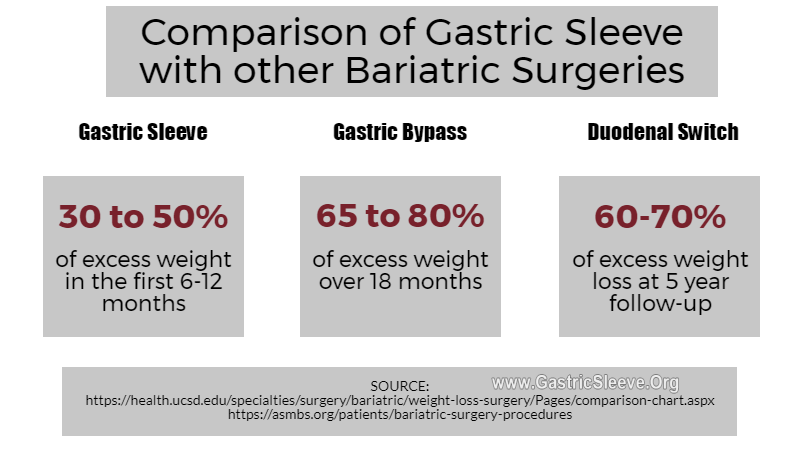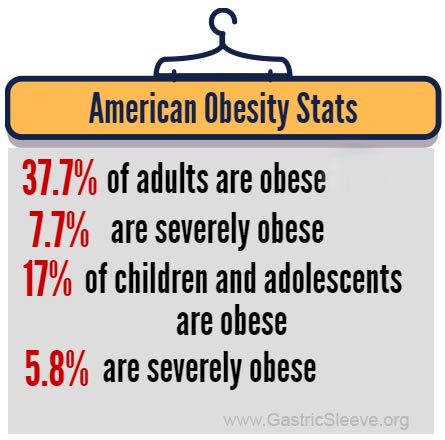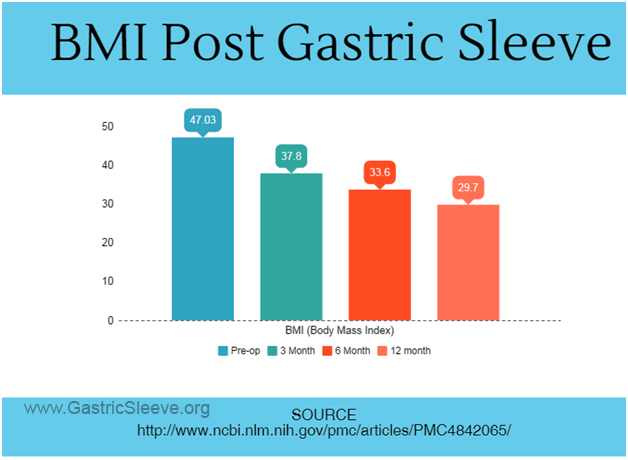Gastric Sleeve Vs. Other Types of Weight Loss Surgery
Here is a table weighing the pros and cons of gastric sleeve vs. other kinds of bariatric surgeries to help you make an informed decision:
| Basis of Difference | Gastric Sleeve | Gastric Bypass (RYGB) | Duodenal Switch (DS) | Gastric Banding (LAGB) |
| Procedure | 70-85% of the stomach is removed leaving behind a sleeve-like structure. Hunger-producing hormone ghrelin is also removed. | The stomach is divided into a small upper pouch and a larger bottom part. Intestines are re-routed. | It restricts the amount of food that can be eaten by reducing the stomach size and re-routing the intestines. | It involves winding a band around the upper portion of the stomach to restrict its capacity. |
| Weight Loss | 30 to 50% of excess weight in the first 6-12 months 2 | 65 to 80% of excess weight over 18 months 2 | 60-70% of excess weight loss at 5 year follow-up 3 | 50 percent of excess weight lost |
| Dumping Syndrome | Less risk of dumping syndrome | Risk of dumping syndrome 5 | No risk of dumping syndrome 6 | No risk of dumping syndrome |
| Reversibility | Cannot be adjusted and reversed | Cannot be adjusted and reversed | Irreversible procedure | Can be adjusted and reversed |
| Implanted Device | No device implanted in the body | No implanted device in the body | No foreign body implanted | A band is implanted around the top portion of the stomach |
For more information on Gastric Sleeve in Tijuana, MX, contact us for a FREE quote.
According to a 2014 study by Katherine M. et al published in the Journal of the American Medical Association (JAMA), in a population of 318.9 million, America has 37.7% adults who are obese and 7.7% severely obese. Over 17% of the children and adolescents are obese, and 5.8% are severely obese1. Many of them are at the risk of developing obesity related diseases such as stroke, diabetes, sleep apnea and hypertension to name a few.
Under these conditions, resorting to sleeve gastrectomy surgery may be an option.
Who Qualifies for Bariatric Surgery?
The American Society for Metabolic and Bariatric Surgery (ASMBS) suggests the following individuals qualify for a bariatric surgery:
- An individual who is overweight (more than 100 pounds) OR has a BMI (body mass index) of ≥ 40
- If an individual has a BMI ≥35 and has at least two obesity-related co-morbidities such as type II diabetes (T2DM), hypertension, sleep apnea and other respiratory disorders
- If previous efforts to lose weight have gone futile over a period of time
Gastric Sleeve Consultation at Tijuana, MX
Our surgeon in Tijuana, MX, will assess you for your overall well-being and determine if gastric sleeve surgery is appropriate for you. As per the ASMBS all patients should undergo the following before the surgery:
- Preoperative evaluation for obesity-related co-morbidities and causes of obesity
- Nutrient screening including B12 and folic acid
- Kidney function, liver profile, lipid profile, urine analysis
- Sleep apnea screening
- Endocrine evaluation
After Roux-en-Y gastric bypass (RYGB), Laparoscopic Sleeve Gastrectomy (LSG) is one of the most performed bariatric procedures worldwide. It produces effective weight loss over a period of one year and provides resolution of obesity related comorbidities 4.
The sleeve gastrectomy removes approximately 80% of the stomach. The result is a sleeve or tube like structure. The new stomach holds around 100 to 200ml of food and liquid.
Our Packages for Gastric Sleeve in Tijuana, Mexico Begin From $3,900 Only
The sleeve gastrectomy procedure is performed under general anesthesia. 4-5 small incisions are made and surgery is accomplished through keyhole surgery instruments. The size of the stomach is reduced by removing a major part of it via stapling.
Weight loss with sleeve gastrectomy is achieved by:
- Reducing the amount of food that can be eaten at a time
- Suppressing the hunger producing hormone called ghrelin
BMI Pre- and Post-Op
A latest study by Tognoni V, Benavoli D and colleagues affirms decrease in BMI post-op from 47.03 to 29.7 at 12 months into the surgery 4.
| Pre-Op BMI | Post-op BMI at 3 Month | Post-op BMI at 6 Month | Post-op BMI at 12 Months |
| 47.03 | 37.8 | 33.6 | 29.7 |
Co-Morbidity Resolution Following Sleeve Gastrectomy
Tognoni et al. observed the following under their 2016 study on resolution of co-morbidities of obesity after 6 months of gastric sleeve surgery:
- 86% of diabetic patients had a complete resolution of T2DM 4
- Hypertension decreased from 56% to 28% of patients 4
- Obstructive Sleep Apnea Syndrome (OSAS) resolved completely in all patients 4
For more information and a FREE Quote, fill in the contact form on the website.
References:
- Katherine M. Flegal, PhD; Deanna Kruszon-Moran, MS; Margaret D. Carroll, MSPH; Cheryl D. Fryar, MSPH; Cynthia L. Ogden, PhD. Trends in Obesity Among Adults in the United States, 2005 to 2014. JAMA. 2016;315(21):2284-2291. doi:10.1001/jama.2016.6458. http://jama.jamanetwork.com/article.aspx?articleid=2526639#ArticleInformation
- https://health.ucsd.edu/specialties/surgery/bariatric/weight-loss-surgery/Pages/comparison-chart.aspx
- https://asmbs.org/patients/bariatric-surgery-procedures
- Tognoni V, Benavoli D, Bianciardi E, et al. Laparoscopic Sleeve Gastrectomy versus Laparoscopic Banded Sleeve Gastrectomy: First Prospective Pilot Randomized Study. Gastroenterology Research and Practice. 2016; 2016:6419603. doi:10.1155/2016/6419603. http://www.ncbi.nlm.nih.gov/pmc/articles/PMC4842065/
- ZHANG P, ZHANG H, HAN X, et al. Effectiveness and safety of laparoscopic Roux-en-Y gastric bypass for the treatment of type 2 diabetes mellitus. Experimental and Therapeutic Medicine. 2016;11(3):827-831. doi:10.3892/etm.2016.2973. http://www.ncbi.nlm.nih.gov/pmc/articles/PMC4774318/
- Biertho L, Simon-Hould F, Marceau S, Lebel S, Lescelleur O, Biron S. Current Outcomes of Laparoscopic Duodenal Switch. Annals of Surgical Innovation and Research. 2016;10:1. doi:10.1186/s13022-016-0024-7. http://www.ncbi.nlm.nih.gov/pmc/articles/PMC4722734/




